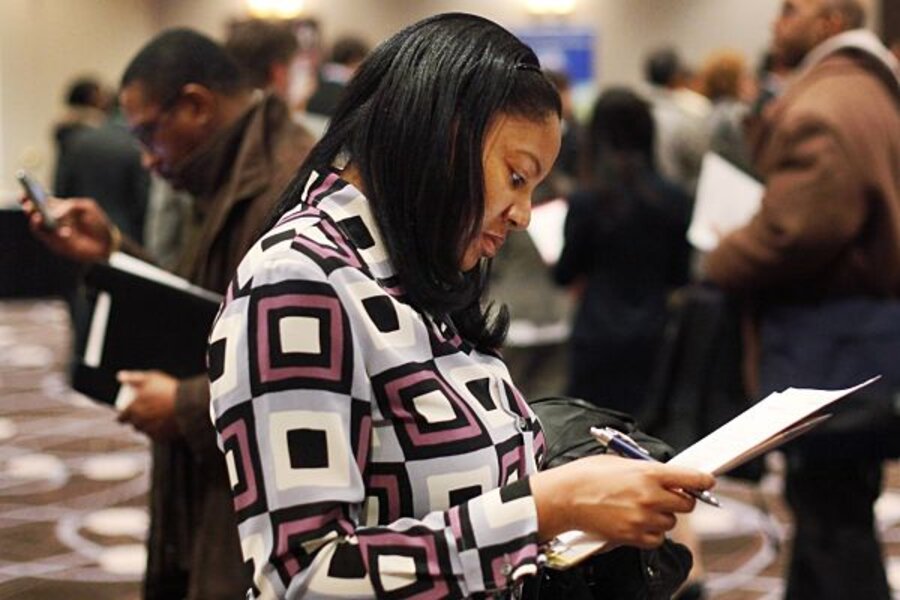Unemployment rate: 9.7 percent. Underemployment: far higher.
Loading...
The unemployment rate last month in the United States was better than expected, holding steady at 9.7 percent, the Bureau of Labor Statistics (BLS) reported on Friday.
What the report didn’t say: Almost 17 percent of Americans are underemployed, according to the BLS. A recent Gallup poll puts the figure at almost 20 percent.
This means that nearly 30 million Americans are unemployed or working fewer hours than they’d like, which could put a big drag on any economic recovery.
“The unemployment numbers only show the tip of the iceberg,” says Ed Farrell, director of the Consumer Reports National Research Center. “The underemployed are discouraged, and their impact on the economy is grossly underestimated.”
Record underemployment rates
The underemployment rate in February – 16.8 percent to be exact – was among the highest rates that the BLS has recorded since it started tracking the statistic in 1994, says Stacey Standish, a press officer for the BLS.
“It peaked in October ’09 at 17.4 percent,” Ms. Standish says.
The BLS’s definition of underemployment includes three categories: the unemployed who are still looking for work, the unemployed who have stopped looking for work, and those who are employed part time but would like to be employed full time.
The reason it’s so high, says Gary Burtless, a senior fellow at the Brookings Institution in Washington, is something many Americans know: Jobs took a particularly hard beating during this recession.
“A healthy job market in the US is one in which ... unemployment is around 3-1/2 to 4 percent,” Mr. Burtless says. “In this particular recession, the number of people affected by unemployment has been extremely high.”
He adds, “The hours of work have slumped, which means we do have an exceptionally high number of people in part-time positions who want to be full-time.”
But, says Burtless, a more telling statistic is the labor-force participation rate – the number of people who are working or looking for work in the civilian job market. When that rate declines, as it has recently, it means more people are discouraged and have stopped looking for work.
“The falloff in the participation rate has been really saddening,” Burtless says. “It indicates that a lot of folks have given up. It’s a strong signal of their pessimism about what the job market has to hold for them.”
Even those who are working part time are discouraged, according to the Gallup poll. Sixty percent of the underemployed are not hopeful about finding work in the next four weeks, the poll reported.
Underemployment slows recovery
That pessimism translates into a slower economic recovery, economists say. The underemployed tend to spend much less than their fully employed colleagues – 35 percent less, according to Gallup. This potentially costs the economy hundreds of millions of dollars every month.
“You look at an economy where 1 in 5 are underemployed and take one-fifth of spenders out of the economy: That has huge implications in terms of our ability to mount any kind of consumer recovery,” says Mr. Farrell of Consumer Reports. “Our economy is so dependent on consumer spending that until people get back out there buying, you won’t see things improve.”
So how long until things improve?
“It’s very tough to predict these things,” says Burtless of Brookings. “But I’ve now lived through enough business cycles that I know at the depth of the recession and early months of recovery how pessimistic people tend to be. But sometimes, the psychology of the country changes pretty rapidly.
“That’s the nature of the beast,” he says. “We’re always surprised.”





